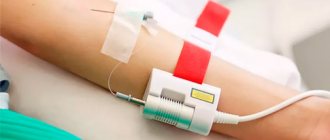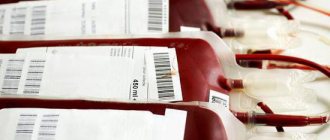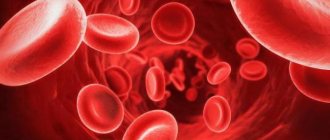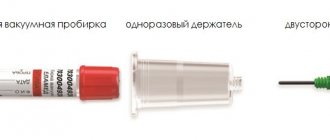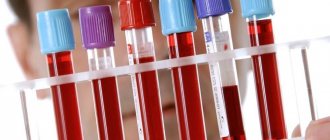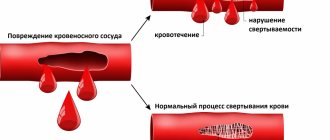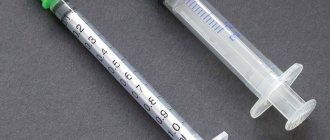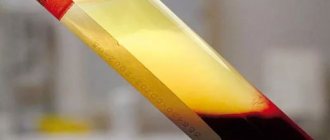UFOB, or ultraviolet blood irradiation, is a procedure in which human blood is exposed to ultraviolet optical radiation. Today this method of treatment has gained great popularity. This is due to its simplicity, safety for the human body, as well as good performance indicators. This method has been successfully used for more than 70 years. During this time, we managed to hone as much as possible how to use it in order to achieve the best results.
Ultraviolet blood irradiation (UFOI) is carried out using special equipment - a source of low-intensity ultraviolet radiation. As the name suggests, the method involves irradiating a small amount of the patient’s blood (1-3 ml per 1 kg of weight) with ultraviolet quanta. Under the influence of ultraviolet radiation, complex biochemical and biophysical processes are launched in the blood, which lead to an improvement in human health.
UFOK is a safe and effective procedure that has been used for many years in various areas of clinical practice. It stimulates a person’s own compensatory capabilities and can be used both independently and in complex therapy for many diseases.
As a result of UVOC, oxygen transport is improved, the risk of blood clots is reduced, the immune system is strengthened and metabolic processes are stimulated, tissue regeneration improves, and antispasmodic and vasodilating effects appear.
Indications for UVOC
Indications UFOK is indicated for acute and chronic inflammatory diseases of various organs:
- in gynecology for colpitis, endometritis, vaginitis, etc.
- in urological practice: for prostatitis, urethritis, cystitis;
- in proctology: for paraproctitis, perianal fissures.
The use of UVOC is allowed for such severe pathologies as sepsis.
The positive effect of this procedure has been proven for intoxication of various etiologies: drug poisoning, alcohol intoxication.
Any sluggish inflammatory process with frequent exacerbations can serve as a basis for prescribing UVOC. In case of chronic tonsillitis, sinusitis, adnexitis and other diseases, the prophylactic procedure can achieve a significant reduction in the frequency of disease relapses.
The stimulating effect of ultraviolet radiation on the blood on the activity of the endocrine glands provides sufficient grounds for prescribing this procedure for diabetes mellitus, menstrual irregularities in women, and decreased potency in men caused by hormonal factors.
Blood irradiation occupies an important place in terms of the prevention of cardiovascular diseases, since exposure to ultraviolet light on the blood leads to an improvement in the rheological properties of the blood - a decrease in viscosity and coagulability. This allows for the prevention of strokes and heart attacks.
How is treatment carried out?
Initially, it is worth noting that ultraviolet irradiation of blood is done under completely sterile conditions. To carry out the entire procedure, you will need a special apparatus, as well as a needle with a diameter of 0.8-1.2 mm. It is injected into a vein, after which a certain volume of blood flows through an ultraviolet ray of light, and so all the blood in the body is gradually purified.
Total procedure time: from 10 to 50 minutes, and the entire course of treatment ranges from 5 to 10 sessions. The result is visible after the first 2-3 procedures.
Prices for services:
| Therapy and additional services | Price |
| A set of basic tests during hospitalization | 5,500 rub. |
| Oxygen therapy | 1,500 rub. |
| ILBI | 2,200 rub. |
| Ozone therapy | 2,200 rub. |
| Plasmapheresis | 13,500 rub. |
| Xenon therapy | 12,500 rub. |
| Doctor consultations | Price |
| Initial consultation by phone | For free |
| Initial consultation for relatives by phone | For free |
| Consultation with a psychologist | 3,600 rub. |
| Consultation with a psychotherapist | 3,600 rub. |
| Consultation with a psychiatrist-narcologist | 3,600 rub. |
| Consultation with a psychiatrist-narcologist at home | 5,500 rub. |
* A full list of clinic services is presented on the “Prices” . Please note that this price list is not an offer and in order to avoid possible misunderstandings, please be sure to check the cost of services on the day of your call by calling +7 or 8 (the call is free!).
Plasmapheresis
With food, water, air, tens of thousands of unnecessary, and sometimes even toxic, substances constantly enter our body. And also stress, lack of sleep, poor environmental conditions. The cleansing organs (kidneys, liver, lungs and others) do not have time to cope with their task, and the body’s natural defenses weaken. What to do? It would be good to remove all toxins from the body. But as? There are many methods, but plasmapheresis is rightly considered one of the most effective today - cleansing the body at a deep, tissue level.
A little history
For several millennia, folk healers have been removing “bad blood” from the body. Bloodletting for medicinal purposes has been known since ancient Egypt. It was a remedy in a variety of situations. The simplicity of the procedure and the rapid improvement in the patient’s well-being were captivating. Moliere also wrote: “If a sick person can barely breathe and cannot speak, a smart doctor will immediately order the blood to be opened for the poor fellow.”
The body reacts to blood loss by turning on all defense systems, including the most ancient of them - cellular immunity. This was the reason for the fashion for bloodletting. But his time has passed. It was replaced by a new method, proposed in 1914 and called “plasmapheresis”, which means removal of plasma (“apheresis” in Greek - removal).
What is plasmapheresis?
Its essence is easy to understand if you remember that blood consists of cells (erythrocytes, leukocytes, platelets) and a liquid part - plasma. Red blood cells (red in color and the largest number of them) carry oxygen to the body’s cells, and in return take carbon dioxide from them, plasma carries nutrients, and removes waste products, the so-called toxins. They are toxins and, when accumulated, can contribute to various diseases. Plasmapheresis allows plasmapheresis to separate plasma containing toxins from blood cells. At one time, up to 30% of the blood is usually purified. For prevention, 3-4 sessions are enough.
During the first session, toxins are removed from the bloodstream. But there are still a lot of them in the tissue fluid, from where they again enter the blood. After the second procedure, the tissue fluid is also cleared. And during subsequent treatments, toxins are removed from the cells themselves. That is, cleansing occurs at a deep, tissue level, which other methods cannot provide. After such a course, the blood becomes purer and more mobile, and the person feels a surge of vigor and strength.
Therapeutic plasmapheresis allows the organs and systems that cleanse the body, overloaded during illness, to “rest” and takes part of the solution to their problems upon itself. With its help, toxins are removed from the cells of our body, poisons of various microbes, other substances that can cause inflammation and allergies, excess fats, sugar, cholesterol circulating in the blood. Plasmapheresis is widely used as a means of recovery after surgery, courses of radiation and chemotherapy for cancer patients.
During treatment, blood “thinning” occurs, which helps improve its transport functions. This also prevents the development of such serious diseases as atherosclerosis, coronary heart disease, thrombosis, thromboembolism, etc.
Another important detail is that the restoration of plasma in the body occurs much faster than that of blood cells. The ProMedicina clinic uses the most modern method of blood purification today: membrane plasmapheresis. It is carried out using the Hemofenix device . The device does not have roller pumps or centrifuges that injure the blood, which ensures minimal intervention in the body and increased safety, while maintaining the high efficiency of the operation. The procedure for cleansing the blood of toxic substances is painless and resembles an intravenous infusion. During plasma removal, the condensed mass of blood cells is diluted with a special plasma-substituting solution and returned to the patient.
To fully improve the internal environment, 3-6 sessions of plasmapheresis are usually required, during which 1-2 volumes of circulating plasma are ultimately removed. The breaks between procedures are 1-3 days. In this mode, even when replacing the plasma only with a special replacement solution, dangerous shifts in the main nutrients (proteins, fats, carbohydrates, electrolytes, hormones, etc.) do not occur.
Who can recommend plasmapheresis?
In fact, you should always be guided by one simple rule: it is easier to prevent a disease than to treat it. You can achieve this by strengthening and restoring the body's defenses and overall health. After thirty, we begin to slowly age; it becomes more difficult for our organs to cope with their responsibilities. In this case, cleansing the body will come in handy. This is prevention.
What if you are already sick? Then you can influence the course of the disease itself. Plasmapheresis is used in the treatment of more than 200 diseases, and most importantly, for their prevention, healing and rejuvenation of the body, correction of immunity disorders, and increasing life expectancy. Blood purification through membrane plasmapheresis gives good results in the treatment of chronic diseases of the respiratory system, genitourinary system, gastrointestinal tract, chronic hepatitis that is difficult to respond to drug therapy, metabolic diseases, allergic and atopic dermatitis, hay fever, bronchial asthma and other diseases.
Only a transfusiology specialist can prescribe and carry out the procedure. You must first undergo an examination.
List of mandatory laboratory tests for the plasmapheresis procedure:
- Complete blood count (with leukemia, platelets).
- Coagulogram.
- Biochemical blood test: total protein, glucose, bilirubin, urea, creatinine and other indicators - as needed).
- Tests for HIV, hepatitis B and C.
- KLR or RW.
Contraindications
During the procedure, agents that slow down blood clotting are used. Therefore, special caution is needed if bleeding may appear or increase, for example, with frequent nosebleeds, peptic ulcers, hemorrhoids, during menstruation and bleeding during menopause. For this reason, the procedure should not be performed on people with bleeding disorders. Plasmapheresis is also contraindicated in cases of low protein content in the blood and hypotension (lowering blood pressure below 90/60 mm Hg).
Efficiency of ultraviolet irradiation of blood
The effectiveness of UFOK is due to its antibacterial effect, as a result of which pathogenic organisms such as viruses, bacteria and infections die. Thanks to the processes taking place, the immune system is strengthened, the body's resistance increases, and recovery occurs much faster. Along with this, normalization of oxidative processes and cell renewal occurs. The decrease in blood viscosity under the influence of ultraviolet radiation is about 30%, which prevents the occurrence of arterial and venous thrombosis, and also promotes the resorption of old blood clots.
The therapeutic effect is expressed in:
- decreased blood viscosity;
- improving the functioning of the immune system;
- activation of metabolic processes in the body;
- improving blood oxygen supply;
- strengthening the body's resistance to the effects of pathogens.
The procedure of ultraviolet irradiation of the blood significantly improves indicators such as the level of bilirubin and cholesterol, significantly reduces sugar levels, and normalizes the enzymatic activity of transaminases (AST, ALT). After it, a person feels much better, he has an appetite, profuse sweating and involuntary trembling of the limbs or the entire body, caused by the contraction of individual muscle groups, disappear. The patient returns to healthy sleep. Many of our patients note that after the procedure their craving for alcohol disappears almost immediately.
| Consultation with a doctor before starting treatment | for free |
| UV blood | 1,300 rub. |
Contraindications
There are a number of contraindications for which it is strictly forbidden to carry out ultraviolet irradiation of blood.
Initially, this is an individual intolerance to sunlight , or any skin diseases associated with ultraviolet rays. You cannot do ultraviolet irradiation of blood if you have cancer, hemophilia, tuberculosis, AIDS, or syphilis. There are other options, which should be discussed with your doctor or physiotherapist.
In the “SM-Clinic” of St. Petersburg, you can do ultraviolet irradiation of blood, after first consulting with a specialist, as well as passing a series of tests. Only an accurate diagnosis makes it possible to prescribe a type of treatment that will be aimed not at harm, but at benefit to the patient. The entire procedure is carried out exclusively in sterile conditions, under the supervision of a doctor who monitors changes and can adjust the treatment.
| Name of service (price list incomplete) | Price, rub.) | In installments* |
| AUFOK without drugs | 1 100 | — |
| AUFOK with ILBI | 1 300 | — |
| AUFOK with Immunomax | 1 300 | — |
* You can read more about the conditions here - Treatment on credit or in installments.
Literature
- Vetchinnikova O. N. Extracorporeal ultraviolet irradiation of blood // Doctor, 1995. – No. 3 – P. 3–6.
- Isakov V. A., Evgrafov V. D., Vodeyko L. P. et al. Extracorporeal photohemotherapy in the treatment of viral infections - St. Petersburg: Hippocrates, 1996. - 48 p.
- Karandashov V.I., Chernyakov V.L., Vetchinnikova O.N. et al. Extracorporeal ultraviolet irradiation of blood in clinical medicine - St. Petersburg: Hippocrates, 1992. - 48 p.
- Krylenko V. A., Odintsov E. S., Darinskaya V. S., et al. To the mechanism of therapeutic action of blood irradiated with ultraviolet radiation. // Anesthesiology and resuscitation – 1987 – No. 1. – pp. 29–32.
- Lirtsman I.V., Filyukova O.B. Assessment of the influence of extracorporeal ultraviolet irradiation of autologous blood of patients in terminal conditions on some indicators of cellular immunity //Anesthesiology and Reanimatology - 1991. - No. 2. – pp. 37–38.
- Treshchinsky A.I., Vasiliev G.A., Sheiman B.S. and others. Ultraviolet irradiation of autologous blood in the clinic. // Medical practice – 1984 – No. 3. – pp. 11–16.
